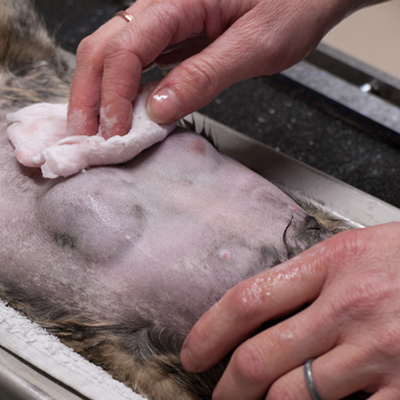I’m sure you don’t think about cat breasts very often. After all, they’re not nearly as obvious as human women’s breasts, and since they’re buried in your feline friend’s fur, it’s hard to remember they even exist.
But remember you should, because cats can and do get breast cancer. In fact, it’s the third most common cancer in cats. Read on for information about risk factors, warning signs, prevention and treatment.
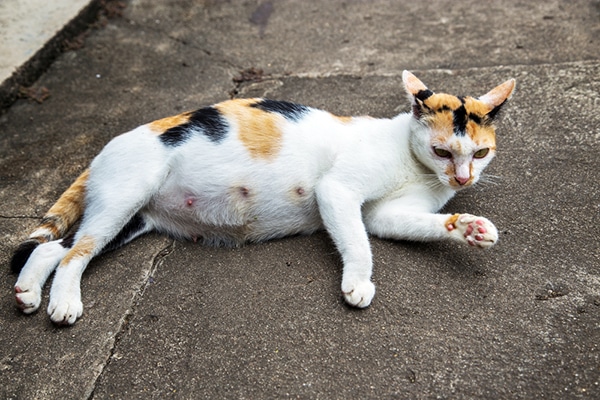
The 7 Things to Know About Breast Cancer in Cats
1. The basics of cat breasts
Cats have eight mammary glands in two “chains” of four on each side. Each chain of mammary glands is connected by lymph ducts and blood vessels. Each mammary gland has its own nipple and produces its own supply of milk.
2. Risk factors
Sex hormones have a profound impact on the risk of mammary cancer. Intact female cats are much more likely to develop the disease than spayed ones. According to a 2005 study in the Journal of Veterinary Internal Medicine, the incidence of mammary tumors is reduced by 91 percent in cats spayed before six months of age and by 85 percent in cats spayed before one year. Siamese cats are at higher risk than other breeds, as are Persians.
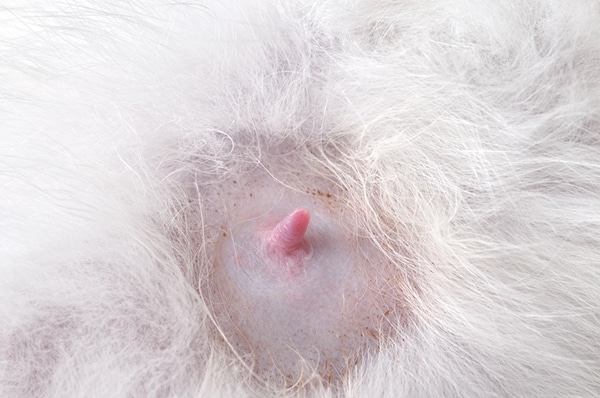
3. Warning signs of mammary cancer
Lumps in, on or near mammary glands are never normal. Other symptoms to look out for are clear, milky or bloody secretions coming from the nipples; open sores that don’t heal; ulcerated or necrotic (dead) tissue at the site of the tumor; and weight loss for no reason. If the cancer spreads to the lungs, your cat may also experience breathing problems.
4. Male cats can get breast cancer, too
As with humans, male cats can develop mammary cancer. It is much rarer in males than in females, but if you feel a strange lump or see an odd sore on your male cat’s chest, take him to the vet right away.
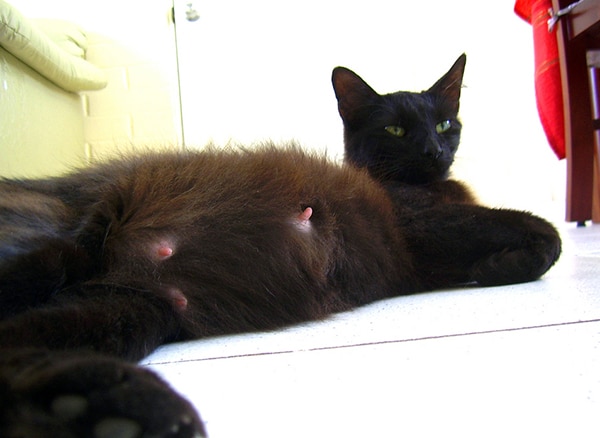
5. 85 percent of feline mammary lumps are malignant
Of that 85 percent, almost all are adenocarcinomas, highly aggressive tumors that metastasize (spread) rapidly. The remaining 15 percent are tissue overgrowths or other types of benign or malignant tumors. However, even benign tumors can lead to malignant ones, so vets often recommend removing any growths around the mammary glands.
6. Surgery is the most widely used treatment
The vet may opt to do a lumpectomy, removing just the tumor and some noncancerous skin around it; a mastectomy, removal of the entire mammary gland; or a radical mastectomy, removal of all the mammary glands and lymph nodes on the affected side. Because mammary cancer in cats is so aggressive, veterinarians usually recommend radical mastectomy followed by chemotherapy.
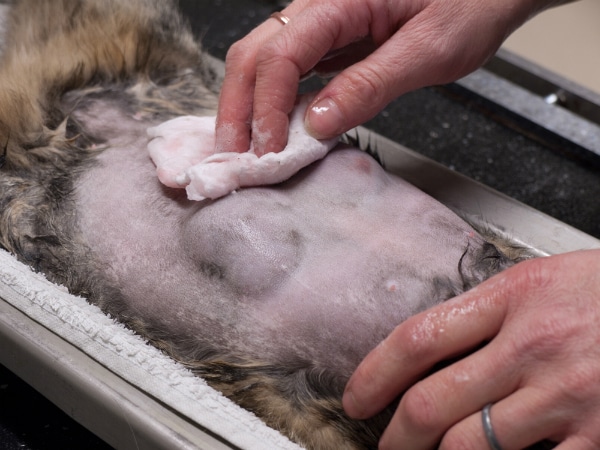
7. What’s the prognosis?
Life expectancy is based heavily on the size and grade of the tumor. According to the Ohio State University Veterinary Medical Center’s webpage on mammary cancer, cats with tumors more than 3 cm in diameter have a median survival time of 4 to 6 months, cats with tumors 2 to 3 cm in diameter have a typical life expectancy of about two years, and cats with tumors less than 2 cm in diameter generally survive more than three years.
So the bottom line is, minimize your cat’s risk of mammary cancer by having her spayed before six months of age. If you do choose to keep your cat intact, check her mammary area for lumps or sores at least once a month. If you do find something suspicious, go to the vet right away. If it’s not cancer, you’re out the cost of an exam fee and a couple of tests, and if it is, the earlier it’s caught, the better the chances of long-term survival.
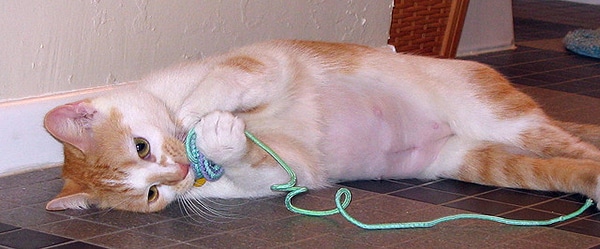
Have you had a cat with mammary cancer? What were the first signs you saw? What kind of treatment did you do? Let us know in the comments.
Read more health stories by JaneA on Catster:

